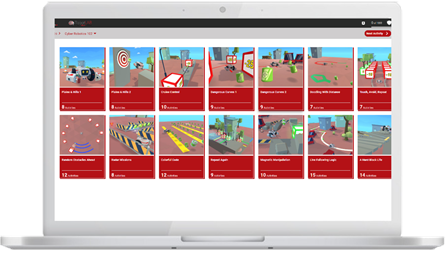For many teachers, the challenge of integrating technology into their own teaching is one they are just starting to feel comfortable with, and now comes the next challenge of teaching digital literacy skills to their students. Here are some tips on how to assess digital literacy.

1. Don’t Do It Alone
Digital literacy encompasses four main areas: tech skills, authorship rules, evaluation of information, and online social responsibility. Depending on what age and subject matter you teach, it may not be possible for you to incorporate all of these areas into your teaching and assessments. Collaborating with fellow teachers through inter and transdisciplinary projects can be a great way of assessing digital literacy skills. Another approach is getting guidance from instructional technology coaches and computer teachers on what digital literacy skills your students are lacking and how to evaluate them through your subject matter.
2. Go to the Standards
ISTE publishes a set of standards for students that you can use to develop digital literacy assessments in your classroom. For example, the standard ‘Digital Citizen’ has several substandards that can be tied to specific behavior online, such as, “Students demonstrate an understanding of and respect for the rights and obligations of using and sharing intellectual property”. This standard can be incorporated into any assignment where students have to navigate copyright, such as creating a website with images and videos found on the web.
ISTE also evaluates curricula using their standards, so you can use the standards to find Edtech products that fill digital literacy assessment needs.
3. Rubrics
It can be difficult to decide how to grade digital literacy assessments as the ultimate goal is to beyond discrete knowledge to develop students’ digital literacy skills and their behavior as digital citizens. For this reason, a rubric is a useful tool as it allows you to give feedback to students in a qualitative way and to show the continuum of development.
Examples of how rubrics can be used to assess digital literacy can be found at the Stanford History Education Group, which focuses on teaching students to evaluate the information on the Internet and has materials and projects available with rubrics and sample responses.
4. Build Assessment In
Whenever you use a digital resource in your classroom, such as a video or a website, give students the opportunity to evaluate it. Key areas to include are who wrote or sponsored the information, what evidence do they provide, and how the information compares to other sources. You can have students discuss this in groups or have them respond to the key areas in an exit slip. By building in regular formative assessments of digital literacy, you help students to build a habit of thinking critically about the digital world.
5. Don’t Recreate the Wheel
Several good resources for lesson plans, projects, and assessment tools have been mentioned above, and there are many more available to you as you think about how to teach and evaluate digital literacy skills. It is is important to remember that digital literacy is relatively new to curriculums and be open to the idea of lifelong learning and learning along with your students.
How have you assessed digital literacy in your classroom? What assessment tools do you go back to over and over again? We would love to hear about your experiences.
Keep teaching and learning during COVID-19 with RobotLAB and CoderZ!

CoderZ is an online educational environment that improves students 21st century skills, while they are having fun programming their own virtual cyber robot. CoderZ and RobotLAB has different lessons to do at home! Check them out Here

